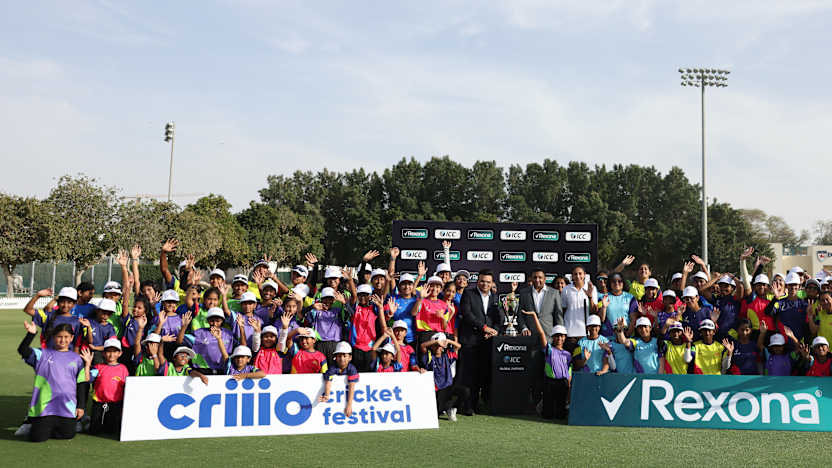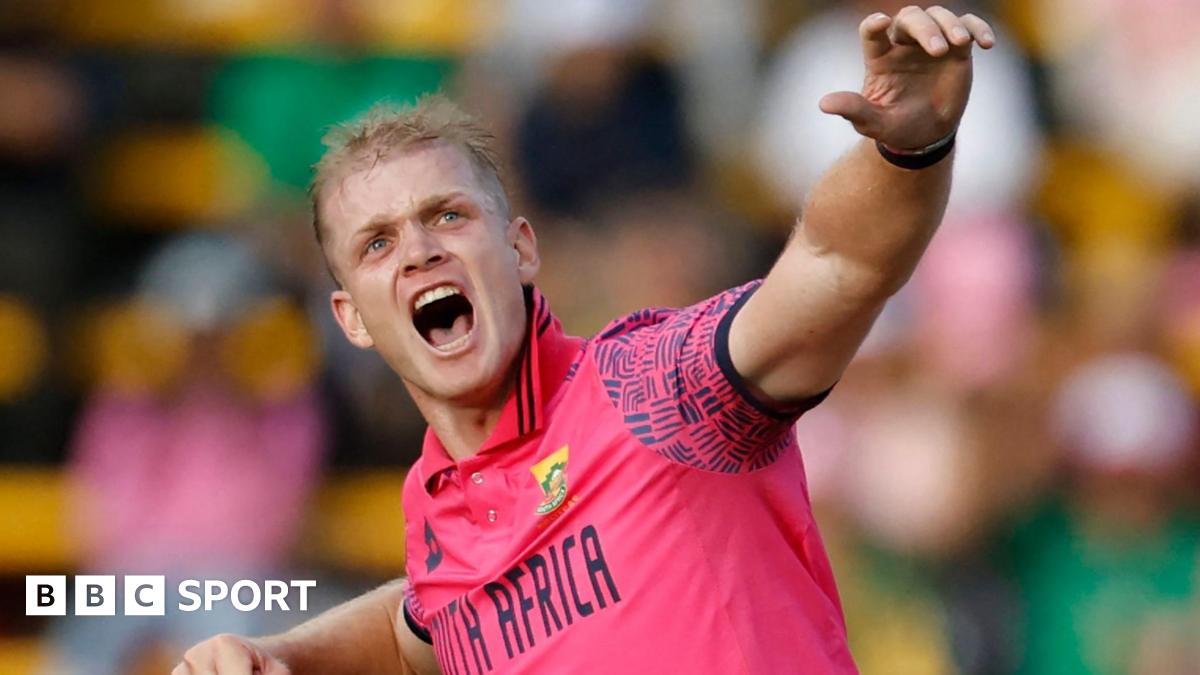‘Genius’ Smith revels in solving subcontinent riddles | cricket.com.au

On the eve of his return to Australia’s Test captaincy, almost two years after his most recent stint as interim skipper, Steve Smith spoke of the enjoyment he derives from the unique challenge posed by leading in Asia.
Smith might have been forgiven for knocking back the job with Pat Cummins sitting out the current tour to Sri Lanka, through a hybrid of paternity leave and rehabilitation from an ankle problem.
After all, Smith’s previous sojourn to the ‘tropical teardrop’ as Test captain yielded a 0-3 defeat, Australia’s first and to-date only whitewash at the hands of Sri Lanka, and he’s celebrated just three victories on the subcontinent from 11 matches at the helm.
But the unique questions posed by games played on bare and often abrasive pitches, in places where pace bowlers are as rare as personal space and spinners apply suffocating pressure to embattled batters, appeals to his quest for answers.
A devotee of crossword puzzles in those rare moments he’s not consumed by cricket, and described by former coach Justin Langer as the greatest on-field problem solver he’s encountered, Smith has likened strategy on the subcontinent to a game of chess.
“It’s really different to back home where you have your three slips, and your third slip might go to cover, or your square leg goes out or comes up,” Smith said prior to the first Test at Galle where Australia remains in a dominant position despite yesterday’s rain.
“There’s a lot more that goes into it, and you’re trying to get inside the batter’s mind of what they’re trying to do on the wicket and make them do something different.
“It’s a part of the game I really enjoy, it’s almost a mental rather than a physical or skill-based game in that respect.
“It’s good fun.”
Australia was able to prise out just two Sri Lanka batters as bursts of heavy rain in Galle reduced day three to 27 overs, but they were crucial scalps of the hosts’ top-ranked player Kamindu Mendis (15) and rival captain Dhananjaya de Silva (22).
And both could be attributed to Smith’s preparedness to move his pieces around the board.
Mendis, currently seventh on the ICC’s men’s Test batting rankings having averaged 75 across 16 innings last year, might consider himself unlucky to have been caught behind attempting to flick Mitchell Starc off his pads, but there was a broader game at play.
Immediately before the attacking left-hander’s dismissal, Smith sent an extra fielder to deep backward square leg which meant he had two men stationed on the boundary rope behind square.
That signalled Starc was either expected to bang in a short ball and tempt Mendis into skying a hook shot, or opt for the double-bluff and fire in one of his trademark yorkers with his quarry on his heels awaiting a bouncer.
There’s a reasonable case to be made for Starc simply getting lucky when, instead of either of the above options, he slid a full ball wide of leg stump and Mendis obliged with a wafting glance that only made it as far as keeper Alex Carey moving neatly to his right.
But it might also be posited that Smith’s manipulation of his fielders had achieved his stated ambition to “get inside the batter’s mind” and railroaded Sri Lanka’s most in-form batter into playing a stroke he might have otherwise avoided.
Certainly, Matthew Kuhnemann was in no doubt who to attribute for the wicket of Dhananjaya which terminated the most productive partnership of an innings that remains on the brink at 5-136 in reply to Australia’s 6(dec)-654.
The Sri Lanka captain had moved seemingly without concern to 22 from 33 balls faced at the day’s first drinks break, with successive boundaries through cover off Todd Murphy immediately prior to the brief interval.
Kuhnemann resumed the attack having been switched from the opposite (Pavilion) end where he had taken a wicket in his opening over on Thursday evening, and tossed-up his first two offerings with Chandimal taking a simple single from the second.
That’s when Smith orchestrated another field change, bringing the fielder at long-off into a conventional mid-off and the leg-side sweeper in the deep similarly into the inner fielding ring.
Understanding Dhananjaya was on the counter-attack and doubtless still brimming with adrenaline after back-to-back boundaries, Smith effectively dared his rival skipper to launch Australia’s left-arm spinner over the infield.
In what Smith might consider a checkmate move, or solving the outstanding clue in a crossword quiz, he watched the batter jump down the pitch almost before Kuhnemann had bowled.
Dhananjaya knew he was in trouble when Kuhnemann pushed through his delivery slightly flatter, a little faster and a touch wider of the stumps, and once it passed the flashing bat of a flailing batter Carey completed the stumping.
“That was probably down to ‘Smudge’ (Smith)”, Kuhnemann confessed after rain returned and stumps on day three were drawn at 3.30pm with Australia still 518 runs ahead on the first innings.
“He made the field adjustment, he brought mid-off up and brought mid-on even further up and around.
“Smudge tactically is a genius.”
If Smith’s captaincy capacity in the field makes him something of a savant, then his batting record when leading the Test team is positively Einstein-ian.
Following his 141 in Australia’s first innings at Galle – his 35th ton, which ranks him seventh on the all-time Test list – Smith’s batting average when skipper lifted to 67.93 from 68 innings.
Among Test captains to have led their team 10 or more times, only Sri Lanka’s Kumar Sangakkara (69.61) and the incomparable Don Bradman (101.52) boast better averages as skippers.
Smith’s record is even more remarkable when viewed via the frequency of his hundreds as captain.
With 16 centuries from those 68 knocks, Smith can claim a triple-figure score almost 25 per cent of the time he makes a trip to the middle when carrying the captain’s mantle.
Of the skippers who have posted more hundreds while at the helm, none come to close to that quotient with South Africa’s Graeme Smith scoring 25 from 193 innings (13 per cent), India’s Virat Kohli 20 from 113 (18 per cent) and Australia’s Ricky Ponting 19 from 140 (13.5 per cent).
As his current Test vice-captain Travis Head noted in the lead-up to this first Test at Galle, Smith’s batting acumen on subcontinent pitches enables him to comprehend and explain what makes opposition players vulnerable in extreme conditions.
“He (Smith) plays spin so well, so to have someone who plays spin as well as he does and understands spin in these conditions,” Head said when asked what traits Smith brings to the leadership job.
“He understands what’s uncomfortable and what’s not, and I think he can help that and direct that.”
Should Galle’s unseasonally monsoonal weather – in what is historically the seaside city’s driest month – allow play to resume as planned this morning, Smith’s next conundrum will be removing unbeaten Sri Lanka batter Dinesh Chandimal.
It was Chandimal who masterminded Sri Lanka’s innings victory when the teams last met, in the final Test of the 2022 campaign in Galle, when he plundered 206 not out in more than nine hours of batting.
And Chandimal was a pivotal figure in Sri Lanka’s 2016 whitewash at home that caused Smith such angst, as third-highest runs scorer in that series behind his current not out batting partner Kusal Mendis and Dhananjaya de Silva.
Chandimal has scored six of his 16 Test centuries to date at Galle where he currently averages almost 60, and has already reached 63 from 115 balls faced with the incumbent pair their team’s last recognised batters.
But if you ask Kuhnemann, if anyone can fathom a method to remove the former Sri Lanka captain, it’s Australia’s stand-in skipper marshalling a three-pronged spin attack in addition to Starc and seam-bowling allrounder Beau Webster.
“He (Chandimal) is batting beautifully at the moment, playing some lovely shots against all of us,” Kuhnemann said last night.
“So it’s just whether or not we try to block that boundary option for him and get him defending, and try to get him out caught at bat-pad or slip, or whatever.
“But I’m sure ‘Smudge’ and ‘Ronnie’ (coach Andrew McDonald) will get together tonight and come up with a plan, and we’ll go from there.”
Qantas Tour of Sri Lanka
First Test: January 29-February 2, Galle (3.30pm AEDT)
Second Test: February 6-10, Galle (3.30pm AEDT)
Sri Lanka Test squad: Dhananjaya de Silva (c), Dimuth Karunaratne, Pathum Nissanka (subject to fitness), Oshada Fernando, Lahiru Udara, Dinesh Chandimal, Angelo Mathews, Kamindu Mendis, Kusal Mendis, Sadeera Samarawickrama, Sonal Dinusha, Prabath Jayasuriya, Jeffrey Vandersay, Nishan Peiris, Asitha Fernando, Vishwa Fernando, Lahiru Kumara, Milan Rathnayake
Australia Test squad: Steve Smith (c), Sean Abbott, Scott Boland, Alex Carey, Cooper Connolly, Travis Head (vc), Josh Inglis, Usman Khawaja, Sam Konstas, Matt Kuhnemann, Marnus Labuschagne, Nathan Lyon, Nathan McSweeney, Todd Murphy, Mitchell Starc, Beau Webster
First ODI: February 12, Colombo (3.30pm AEDT)
Second ODI: February 14, Colombo (3.30pm AEDT)
Related
‘Listen from one ear, ignore from the other’: Former India…
India's Rohit Sharma and Mohammed Shami (AP Photo) NEW DELHI: Former wicketkeeper-batter Syed Kirmani has expressed his opinion that experienced fast bowler Mo
India faces New Zealand in budding rivalry at Champions Trophy…
State AlabamaAlaskaArizonaArkansasCa
ICC and Unilever announce landmark partnership on International Women’s Day…
The two-year partnership, kicking off at this year’s Women’s Cricket World Cup in India and running until the end of 2027, marks the world cricket governing
IPL 2025: Mumbai Indians sign Corbin Bosch as replacement for…
Mumbai Indians have signed South Africa all-rounder Corbin Bosch as a replacement for his injured countryman Lizaad Williams for this year's Indian Premier Leag











